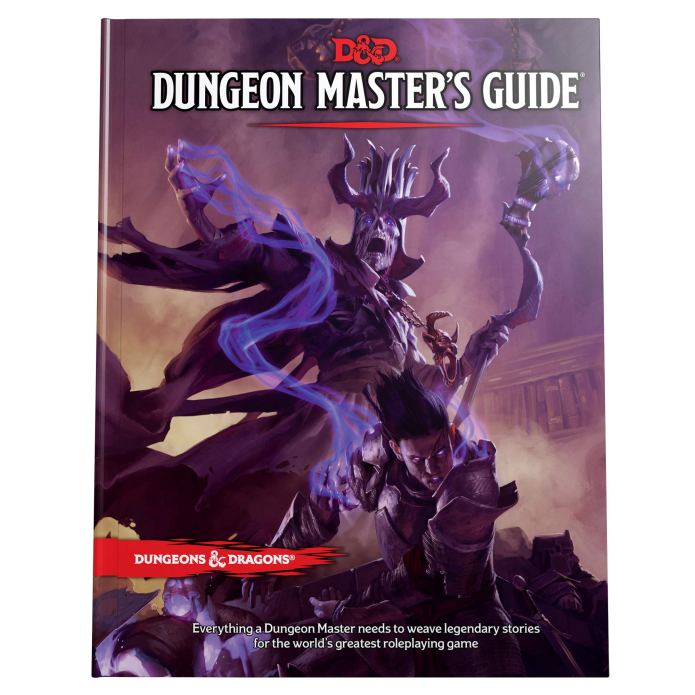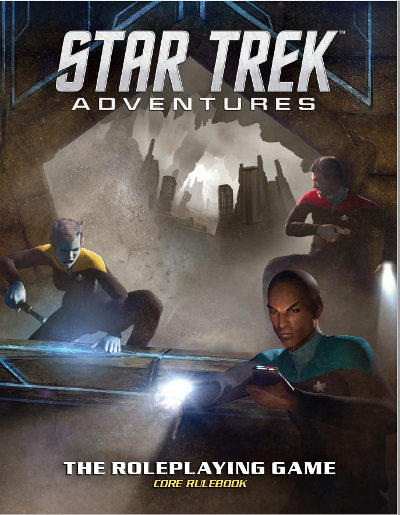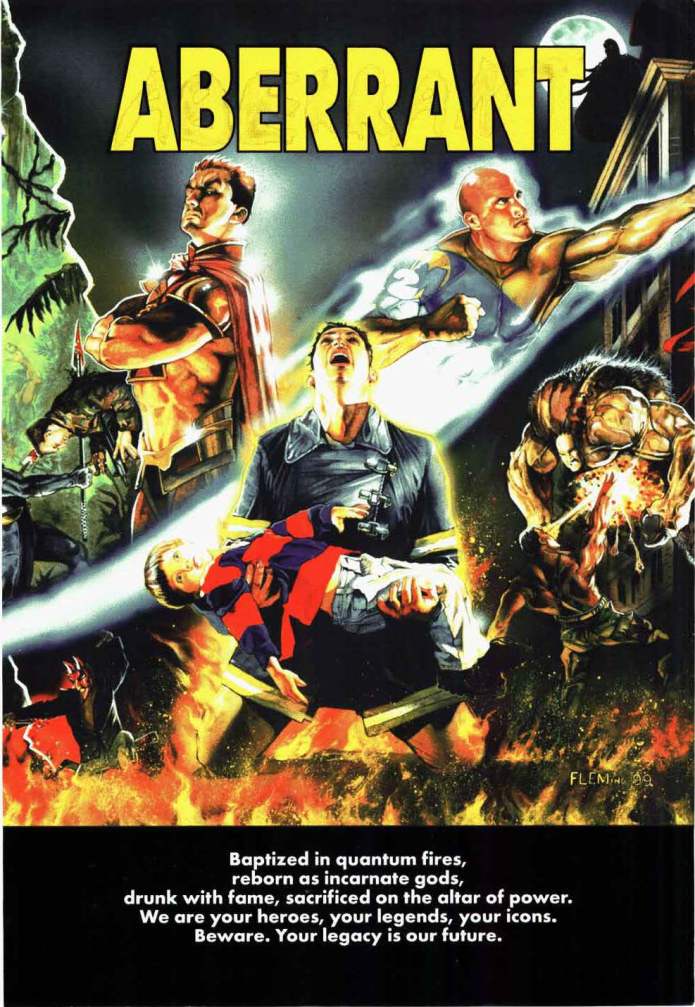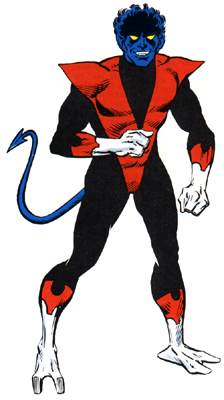Welcome to the twelfth in an occasional series called It Builds Character in which I use the character generation rules of various tabletop role-playing games to create a character and attempt to flesh them out into something distinctive.
It Builds Character #12: Vampire The Masquerade
The Game
For the twelfth entry in this series, I’m finally escaping from Dungeons & Dragons. Instead, I’m going slightly old score with a game that was originally published by White Wolf, who were also the publishers of the game I used for the fourth entry, Aberrant. The game I’m using today is probably the most famous of the games the studio released: Vampire The Masquerade. While the game and studio have recently been revived for a fifth edition, that’s not the version I’m using here. There’s a few reasons for this, notably there’s been some controversy around the new owners of White Wolf and some of the things they’ve incorporated into the backstory (notably links between the Chechen government, real-world LGBTQ persecution and in-game vampires), other elements are changes in the game’s focus. But honestly, the biggest reason I’m sticking with the 20th Anniversary Edition released way back in 2011 is simply that I own a copy of it, and not fifth edition.
So, what’s the game itself actually about? Unsurprisingly enough, vampires. It’s set in a worse version of our world, known as the World of Darkness, where supernatural entities lurk in the shadows. Thematically, the players are vampires who are battling the beast within in order to keep their humanity (there are exceptions, of course). Since they have to drink blood, this becomes a challenge. Vampire: The Masquerade in particular has a lot of political intrigue between various sects and tribes that result in a strict hierarchical structure based on how powerful the vampires are with older vampires generally more powerful and having stronger powers linked to the potency of their blood (we’ll go into more detail than that as we create the character below because things get complicated quickly. There’s also rumors of an impending vampire apocalypse, known as Gehenna, which has been prophesied, and in the backstory of the world, some of these earlier events have definitely happened. The game is designed to be kind of angsty…
The Character
I don’t have a full concept of the character here, other than they’re definitely an aesthete, and somewhat tortured in the grand tradition of Anne Rice style vampires. Though more Louis de Pointe du Lac than Lestat de Lioncourt. Also my characters are generally less sexually charged than Anne Rice’s tend to be…
So, let’s get started.
STEP I: Character Concept
Well, this is a minor problem, since I didn’t have a concept in mind. The game uses concept as a general catch all, and based on the very short list of concepts presented in the character creation overview, it’s more the job the character held whilst still mortal than anything else.
Also in this step is figuring out the character’s Nature, Demeanor, and Clan. All of which I’ll go into in greater detail as I go.
For the overall concept, I decide that the character was a Professional in life – specifically, they were a lawyer. Not sure why, but it seemed to fit.
Nature and Demeanor are chosen from roughly the same list of options, which the game refers to as Archetypes. The game specifies that Demeanor is the “face” that the character shows to the world and Nature is their true self. They don’t have to be different, but I feel like there’s more role-playing opportunity if they are. As for most of this section, this isn’t really related to game mechanics, but Nature can make a difference to the character’s Willpower points (see STEP V: Finishing Touches below for more on that).
Also, I feel like a character who was a lawyer would definitely present a different front from their true self, or they’d probably have been bad at lawyering…
I decide since I wanted the character to come across as something of an aesthete, so they present the Demeanor of a Bon Vivant to the world, so they’re going to be role-played as having fairly low self-control and as something of a hedonist looking for a good time.
The character’s true nature is much closer to being a Director, trying to forge some kind of order out of the chaos of everyday reality. That means they can regain willpower by influencing/aiding either a group or a particularly influential individual.
The last part of this step is to choose the clan that the character belongs to. There are thirteen different clans in the game, and they all have different outlooks on what vampirism means and also suggests the priority the character places on later steps. Each clan has a different collection of Disciplines, which can be thought of as special powers available to vampires. Arguably, a clan is the Vampire equivalent of what would be considered a class in D&D.
The clans are also predisposed towards joining a different sect. The sects are the Camarilla, which is a group dedicated to vampire politics and the titular Masquerade, which is keeping the existence of vampires hidden from mortals, the Sabbat, which is a more anarchic group dedicated to vampiric supremacy over humanity. Then there are four independent clans who don’t really ascribe to either of the sect viewpoints.
The clans are:
- Assamite – a religious blood cult of assassins that are independent from the sects
- Brujah – a rebellious group of agitators who were originally responding to the betrayal of Carthage
- Followers of Set – A cult dedicated to the corruption of humans and vampires in the name of the Egyptian deity Set
- Gangrel – A more animalistic clan. More loners and nomads, tend to be more wilderness-based and less civilization-based
- Giovanni – A family of Italian necromancers who adopted vampirism by usurping an older clan. Very much not trusted
- Lasombra – One of the primary clans in the Sabbat. Ruthless, social Darwinist, and aristocratic tribe. Manipulates shadows.
- Malkavian – A clan that suffers from madness/mental illness, but are powerful as they share a kind of hive mind
- Nosferatu – Cursed with hideous appearances. Often live in sewers or other boundary places. Very good as spies and getting information, so often act as spies. Nominally aligned with the Camarilla.
- Ravnos – A trickster clan with origins in the East. This is a clan that is fading away in modern times.
- Toreador – A leading clan within the Camarilla. Often artistic and the most social of the clans, so they tend to have more connections to humanity and culture.
- Tremere – The warlocks of the vampire world who specialize in blood magic, and they have the most rigid pyramidal structure
- Tzimisce – Scholars and clergy among the Sabbat. they specialize in reshaping the flesh of themselves and others.
- Ventrue – The other leading clan of the Camarilla. These are the most aristocratic and “old money” of the clans, and tend to be the power players and kingmakers.
Looking at the various archetypes, the three that make the most sense for the character as I conceive them are the slightly more cultured ones: – Lasombra, Toreador, or Ventrue. I feel like the Bon Vivant Demeanor doesn’t fully gel with my conception of Ventrue.
I also think that the vampiric politics and maneuvering among the Camarilla has more appeal than the somewhat more anarchic nature of the Sabbat for a lawyer, which effectively rules out the Lasombra. So, by process of elimination, the character will be a member of Clan Toreador.
STEP II: Select Attributes
The first step of determining a Vampire character’s attributes is deciding what to prioritize among the three categories: Physical, Social, or Mental. There are three attributes under each category for a total of nine. Each attribute is ranked from one to five “dots,” and by default most characters have a dot in each attribute. On top of that, they get seven dots to spread among their primary attribute category, five for their secondary category, and a mere three for their tertiary category.
As a Toreador, it makes the most sense for the primary attribute category to be Social. Given the character is more of a manipulator/lawyer than a fighter, it makes the most sense for Physical to be the tertiary category. spreading the relevant “dots” around gives the following:
Physical (Tertiary)
Strength: *
Dexterity: ***
Stamina: * *
Social (Primary)
Charisma: ***
Manipulation: ****
Appearance: ***
Mental (Secondary)
Perception: **
Intelligence: ***
Wits: ***
STEP III: Select Abilities
Much like Attributes, a Vampire character’s abilities are divided among three categories that must be prioritized. Those categories are Talents, Skills, and Knowledges. A talent is an intuitive or inherent ability, a skill is an ability that the character has learned through training and determination, and a knowledge is a mental ability learned through research. Unlike attributes, there are no free dots in any ability. Primary category gets 13 dots, secondary gets nine dots, and tertiary gets five. Also, no ability can have more than three dots at this point in character creation.
Based on the character concept so far, to me it makes sense to prioritize Knowledges as primary, Talents as secondary, and Skills as tertiary. Distributing the dots gives:
Talents (Secondary)
Alertness: *
Athletics:
Awareness: *
Brawl:
Empathy: *
Expression:
Intimidation: *
Leadership: **
Streetwise: *
Subterfuge: **
Skills (Tertiary)
Animal Ken:
Crafts:
Drive: **
Etiquette:
Firearms: *
Larceny:
Melee:
Performance: *
Stealth: *
Survival:
Knowledges (Primary)
Academics: **
Computer: **
Finance: **
Investigation: *
Law: ***
Medicine:
Occult:
Politics: *
Science: *
Technology: *
STEP IV: Select Advantages
For me, this is the step where the Vampire character becomes both more distinct, and also more vampiric, since the earlier steps (other than Clan selection) could apply to human characters. Like the last two steps, this is also divided into three subcategories. Unlike the prior steps, there’s no prioritization here, instead each gets a fixed number of dots.
The first category is Disciplines which are blood-based special vampire powers. Available disciplines are clan dependent with each clan offering three disciplines, and each character gets a grand total of three dots to spread across their disciplines. As a Toreador, the character has access to the disciplines of Auspex (ESP and sensory powers), Celerity (speed powers), and Presence (emotional manipulation powers). Thinking about the character concept, I don’t see a reason for the character to have super speed, so none of the three dot are going into Celerity. Since they specialize in emotional manipulation, I opt to spend two of the Discipline dots on Auspex, which gives the character both Heightened Senses and Aura Perception. The last Discipline dot goes to Presence, which allows the character to Awe others.
Our second category is Backgrounds, where the character has five dots to spend on various aspects such as Allies, Mentors, Contacts, Resources etc. most of the background names are fairly self-explanatory. Based on the concept so far, the character should probably have a couple of dots of Resources, since they clearly have access to cash, and possibly a fairly nice place to live. They’d also have at least a dot in Contacts, since they probably know someone at the law firm they worked at in life. I also think that they probably have a little bit of either Influence or Status.
Our final category is Virtues, where we have seven dots to spend, and we also get a free dot in each of the three default virtues of Courage, Conscience, and Self-Control. There are alternative virtues that can be selected if we want the character to have less contact with their humanity. In the case of this character, it doesn’t make sense to switch from these defaults, so let’s stick with those. I go for the most boring option initially, and put two dots in each of the three standard Virtues, and the seventh dot goes into Self-Control
Disciplines
Auspex: **
Celerity:
Presence: *
Backgrounds
Contacts: *
Influence: *
Resources: **
Status: *
Virtues
Conscience: ***
Self-Control: ****
Courage: ***
STEP V: Finishing Touches
We have most of our numbers figured out now, but there’s still a few more stats to generate here. To start of with, there’s a couple of derived stats, first up Humanity, which is the total of Conscience + Self-Control, so seven dots.
We also have Willpower, which is equal to the Courage score.
There’s also a single roll of a ten-sided die (d10) to determine the amount of blood points the character starts with, in this case it was an 8.
Humanity: *******
Willpower: ***
Blood Pool: ********
And now, we have fifteen of something called “Freebie Points” to spend, and they can be used thusly:
- 5 Freebie points for an attribute dot
- 2 Freebie points for an ability dot
- 7 Freebie points for a discipline dot
- 1 Freebie point for a background dot
- 2 Freebie points for a virtue dot
- 2 Freebie points for a Humanity dot
- 1 freebie point for a Willpower dot
I opt to spend 7 of those freebie points bumping up the character’s Presence by a dot to two (which grants him the ability to use a Dread Gaze). That leaves eight to work with. I decide to spend 6 of them on three different background dots, one in Firearms (giving the character 2), one in Etiquette, and one in Investigation (also giving the character 2). That leaves two freebie points to spend, and I opt to use them both to bump up the character’s Willpower score.
Now all we have left to do is decide on some of the physical details of the character. First up, I decide that they are going to be female New Yorker who now unlives in the suburbs of Atlanta after graduating from Emory Law, and would have been in her late thirties when she was Embraced into vampirism. She’s also a willowy brown-eyed brunette, coming in at roughly five foot ten inches tall, favors business clothing in general and her name is Kaitlin di Scenza.
What do you think, loyal blog followers? Is this a series worth continuing? If so, are there any particular games and editions you’d like me to use to create characters?
Please leave some comments and let me know!










